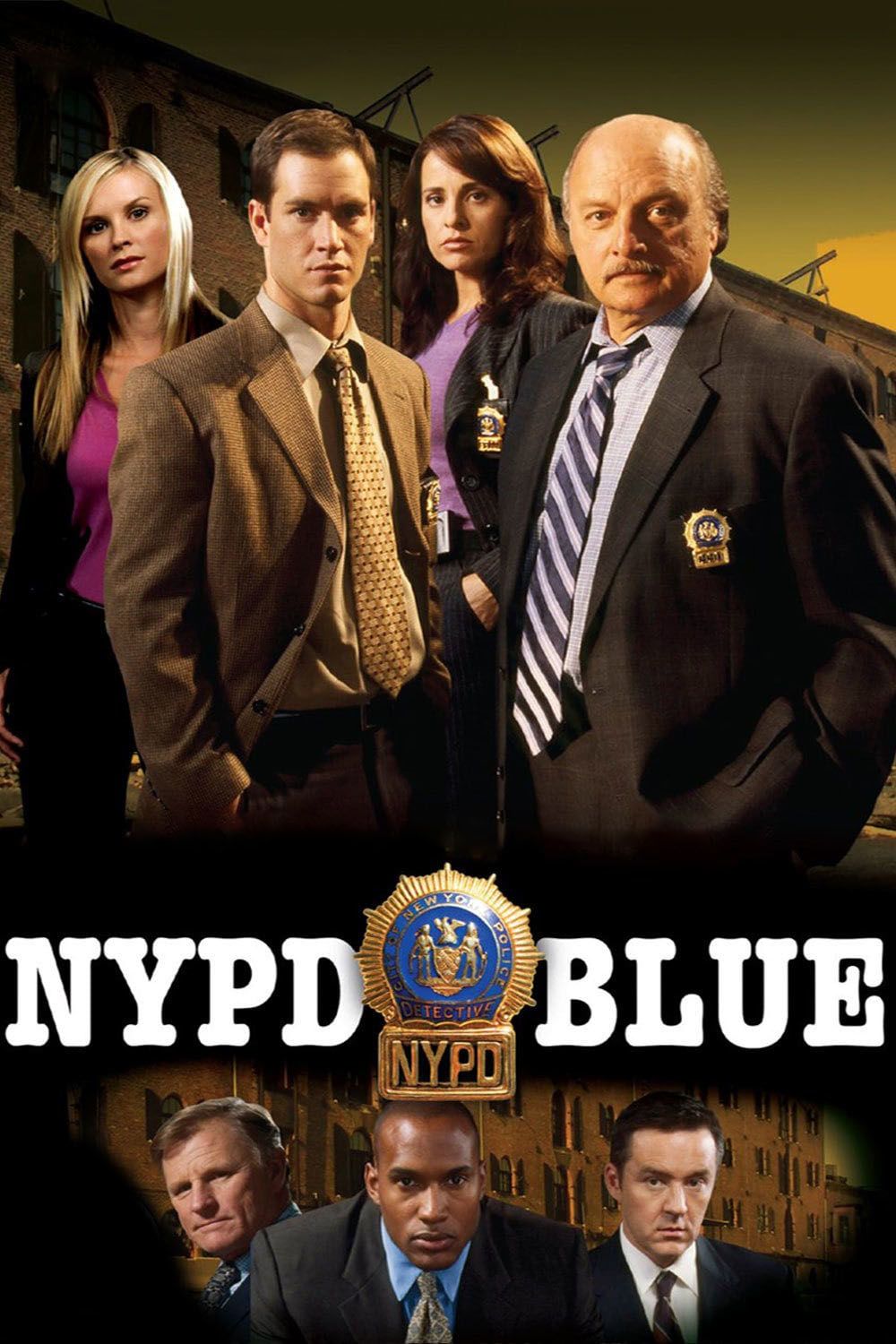‘NYPD Blue’ Took Off Its Clothes and Changed Television Forever

The Big Picture
- NYPD Blue pushed boundaries with its realistic portrayal of police life and inclusion of explicit scenes, shocking viewers in 1993.
- The show attracted controversy and criticism for its nudity, but ultimately received critical acclaim and built a strong fan base.
- While the nudity didn’t define the show’s success, it left a lasting impact on network programming and the police procedural genre.
When ABC’s NYPD Blue burst onto the scene in 1993, the gritty crime drama flipped the police procedural genre on its head with its abrasive language and shocking adult content. This was not the cop drama of years past. Co-creators Steven Bochco and David Milch wanted to show a more realistic view of police life and adult interpersonal relationships. To do this, they decided to include more realistic sex scenes with intentional nudity (obscured by shadows and camera angles), providing a more honest depiction of intimate adult relationships.
With cable shows, unfettered by FCC decency standards, drawing in more and more viewers, Milch and Bochco wanted to lure audiences back to prime time by adding more controversial elements to a network television show. And it succeeded in doing that for 11 seasons. The pilot episode of NYPD Blue included a sex scene that left very little to the imagination. It was a massive moment for network television, and it should have changed the face of broadcast TV forever, but it didn’t. Even now, thirty years after its premiere, very little has changed on network television. Sure, dialogue is full of innuendo, and you may even get the odd curse word once in a while, but network shows are not trying to push boundaries in that way, and the reality is they shouldn’t.
And this isn’t even a moral issue; it’s a business one. With so many streaming services and cable TV networks free to offer whatever content they choose, viewers have more choices than ever. If you’re a television writer, and you want to cuss with the poetic profanity of Samuel L. Jackson or include graphic scenes of nudity and violence (or both, a la Game of Thrones), you can! There are multitudinous platforms voracious for uncensored content. Audiences are no longer bound to expensive cable contracts. Viewers can select the channels they want or use any streaming services for a fraction of the cost of traditional cable (not to sound like a Direct TV commercial). With so many options for creatives and audiences alike, network television is not a desirable platform for pushing boundaries. But in 1993, viewers must have thought that watching two nude people roll around on a network program was one of the most shocking moments they had witnessed on television.
NYPD Blue
Detectives from NYPD’s 15th Precinct investigate homicides within their precinct.
- Release Date
- September 21, 1993
- Creator
- Steven Bochco, David Milch
- Cast
- Dennis Franz , Mark-Paul Gosselaar , Gordon Clapp , Henry Simmons , Bill Brochtrup , Jacqueline Obradors , currie graham , Bonnie Somerville
- Main Genre
- Crime
- Genres
- Crime , Drama , Mystery
- Rating
- TV-14
- Seasons
- 12
‘NYPD Blue’ Wasn’t the First TV Show to Include a Nude Scene
NYPD Blue wasn’t the first show to depict nudity, but it was the first to sexualize it. Other network TV shows in the ’90s that involved a degree of nudity typically revolved around medical shows or procedurals that depicted homicide victims in a state of undress. Even M*A*S*H had a brief moment of nudity when Radar’s (Gary Burghoff) towel slips off, and his buttocks are briefly exposed. These previous nude scenes might have shocked some viewers, but because they were not sexual in nature, they were not seen as overtly offensive. That all changed when NYPD Blue depicted the first nude primetime sex scene.
The pilot episode of NYPD Blue laid the groundwork for the rest of the show. It introduced the main characters, insinuated their personal problems and workplace conflicts, and injected a degree of adult content never seen before on network airwaves. It used much harsher language than other procedurals and did not attempt to hide the unlikable aspects of the lead characters. Right out of the gate, the show included a sex scene between Detective John Kelly (David Caruso) and Officer Janice Licalsi (Amy Brenneman). Though the scene only showed side angles of breasts and brief views of buttocks, many viewers were outraged. The Religious-backed American Family Association targeted ABC affiliates and advertisers in an attempt to have the show removed from the air. While some smaller markets didn’t air the series, the AFA’s attention added to NYPD Blue’s renown. Eventually, critics and fans alike knew what to expect from the show, and with the shock and awe factor waning, viewers became less reactionary.
For a show whose pilot episode pushed nudity further than any other network show, it’s pretty surprising that they didn’t land in hot water with the FCC early on. However, it wasn’t until the 2003 episode “Nude Awakening” that the FCC took action against NYPD Blue for indecency. This time, the nudity in question wasn’t even sexual. Well, not really. The scene depicts a nude Detective, Connie McDowell (Charlotte Ross), preparing for a shower when an eight-year-old boy accidentally walks in on her. We see her bare buttocks, but other than that, camera angles obscure any frontal nudity. Though the case against ABC was eventually dropped in 2011 by the U.S. Court of Appeals, the FCC was highly disdainful of the scene, and some advocacy groups voiced immense displeasure over the court’s ruling.
‘NYPD Blue’ Didn’t Need Nudity to Succeed
Steven Bochco and David Milch created one of television’s most beloved and successful procedurals. Despite the uproar regarding the show’s depictions of nudity and profanity, NYPD Blue garnered much critical acclaim and amassed an immense fan base. Throughout the series, NYPD Blue was nominated for eighty-four Primetime Emmy Awards, winning twenty of them. Interestingly, most critics and fans agree that while the profanity added some realism to the harsh dialogue typical in law enforcement, the nudity didn’t do much to help the show. After the initial novelty wore off, it became clear that though the nudity didn’t detract from the show, it wasn’t what drew audiences back week after week. The compelling stories and well-developed characters were the real draw.
Though Bochco and Milch didn’t intend for NYPD Blue’s nudity to be a gimmick, once the shock wore off, it became just another moment on the show. The series depicted the realities of police life in all the other interactions between the characters. Their intense dialogue, their sometimes shady investigation tactics, the personal troubles that crept into their work–those are the moments that defined the series. NYPD Blue’s creators tried to push the boundaries of network TV through nudity and profanity. Still, the real legacy of the show is in the character-driven narratives and impeccable performances that elevated the series within its genre. While the promise of pushing the boundaries of network TV seems unnecessary now due to easily accessible streaming platforms and cable networks with censor-free content, NYPD Blue left its mark on network programming and the police procedural genre forever.
NYPD Blue is available to stream on Hulu in the U.S.




